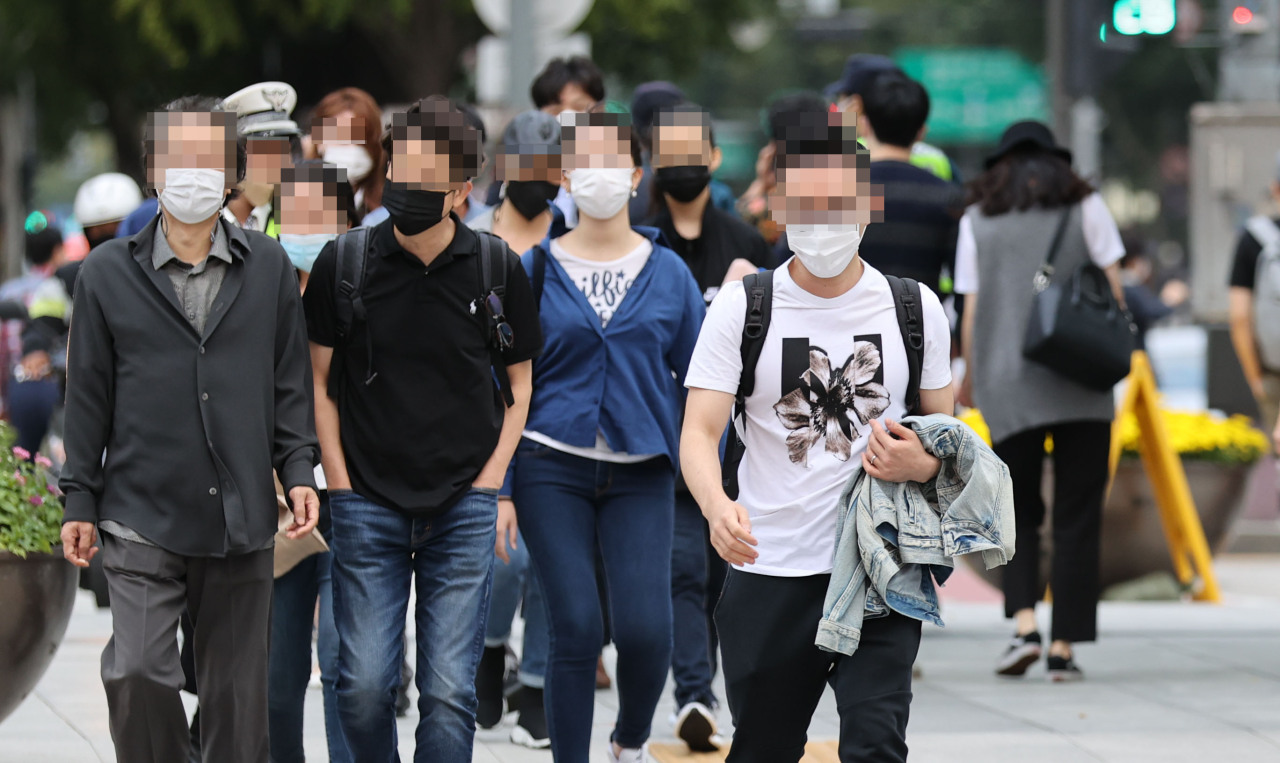Two coronavirus-linked multisystem inflammatory syndrome in children cases confirmed in S. Korea
S. Korea's new daily COVID-19 cases below 100 for 5th day
By Ock Hyun-juPublished : Oct. 5, 2020 - 09:38

Health authorities on Monday confirmed there had been two cases of a rare inflammatory disease linked to coronavirus in South Korea.
The two children -- an 11-year-old boy and a 12-year-old boy -- were admitted to hospitals and recovered from multisystem inflammatory syndrome in children earlier this year, according to the Korea Disease Control and Prevention Agency.
The 11-year-old boy, who had been staying in the Philippines from January to March, showed symptoms of a fever and stomachache and was admitted to a hospital for treatment in late April. He was first not classified as a MIS-C case as he had tested negative for COVID-19 and had no exposure to the virus. In September, he was confirmed to be a MIS-C case after antibodies against the coronavirus had been found in him.
The 12-year-old boy first had contact with a confirmed COVID-19 patient and was admitted to a hospital for treatment in August. After being discharged, however, he had symptoms of a fever and stomachache, and was readmitted in September. He was confirmed for a diagnosis of MIS-C.
The rare inflammatory syndrome in children linked to the coronavirus is a rare condition where different body parts can become inflamed, including the heart, lungs, kidneys, brain, skin, eyes or gastrointestinal organs. Symptoms include a fever, rash, abdominal pain, neck pain and dry cracked lips, to name a few.
The KDCA has so far conducted an investigation into seven suspected MIS-C cases, it said.
Meanwhile, Korea added 73 new coronavirus cases on Monday, including 64 locally transmitted.
Yoon Tae-ho, a senior official from the Central Disaster Management Headquarters, cautiously expected Monday that there will be no “dramatic spread” of the coronavirus after the extended Chuseok holiday, as had been seen in early August.
The two-week average for daily new cases dropped to 66.5 during the period of Sept. 20 to Oct. 3, compared to the period of Sept. 6-19 when an average of 121 cases were reported daily. For the past week, 19.6 percent of the new cases had an unknown source of infection.
Despite the stabilizing trend, the authorities are on alert over a potential silent spread of the virus as well as sporadic clusters of infections.
Adding to concerns of another mass infection, 36 cases were traced to a military base in Pocheon, Gyeonggi Province, as of Monday morning, after an initial three cases were confirmed Sunday. So far, 240 people from the military base have been tested for the virus.
Questions are growing over the source of infection and transmission routes in the Army unit because there has been a ban on services members’ vacations and restrictions on their off-base outings, with some exceptions, in line with the government’s social distancing guidance.
An epidemiological study is underway into the service members and officers from the military base, including one infected officer who had been found to have visited Seoul late last month, according to the Defense Ministry.
Of Monday’s locally transmitted cases, the vast majority were in Greater Seoul -- 19 in Seoul, five in neighboring Incheon and 25 in Gyeonggi Province, which surrounds the capital. Outside the Seoul area, five cases were reported in Busan, four in Ulsan, two each in North Jeolla Province and South Chungcheong Province and one each in Daejeon and North Gyeongsang Province.
There were nine imported cases. Seven cases were identified while the individuals were under mandatory self-quarantine in Korea, with the other two detected during the quarantine screening process at the border. Four cases were from Europe, three from elsewhere in Asia and two from the United States. Two of the imported cases involved foreign nationals.
The number of COVID-19 patients in serious or critical condition was 107 as of Monday.
One more person died from the virus, bringing the death toll to 422. The overall fatality rate stands at 1.75 percent, including 21.17 percent for those in their 80s or over and 7.25 percent for those in their 70s.
So far, of the 24,164 people confirmed to have contracted the new coronavirus here, 21,886 people have been released from quarantine upon making full recoveries, up 41 from a day earlier. Some 1,856 people are receiving medical treatment under quarantine.
The country carried out 6,033 tests in the past day, with over 2.35 million tests conducted since Jan. 3. Some 22,447 people were awaiting results as of Monday.
By Ock Hyun-ju (laeticia.ock@heraldcorp.com)
-
Articles by Ock Hyun-ju




![[Herald Interview] 'Amid aging population, Korea to invite more young professionals from overseas'](http://res.heraldm.com/phpwas/restmb_idxmake.php?idx=644&simg=/content/image/2024/04/24/20240424050844_0.jpg&u=20240424200058)













![[KH Explains] Korean shipbuilding stocks rally: Real growth or bubble?](http://res.heraldm.com/phpwas/restmb_idxmake.php?idx=652&simg=/content/image/2024/04/25/20240425050656_0.jpg&u=)

